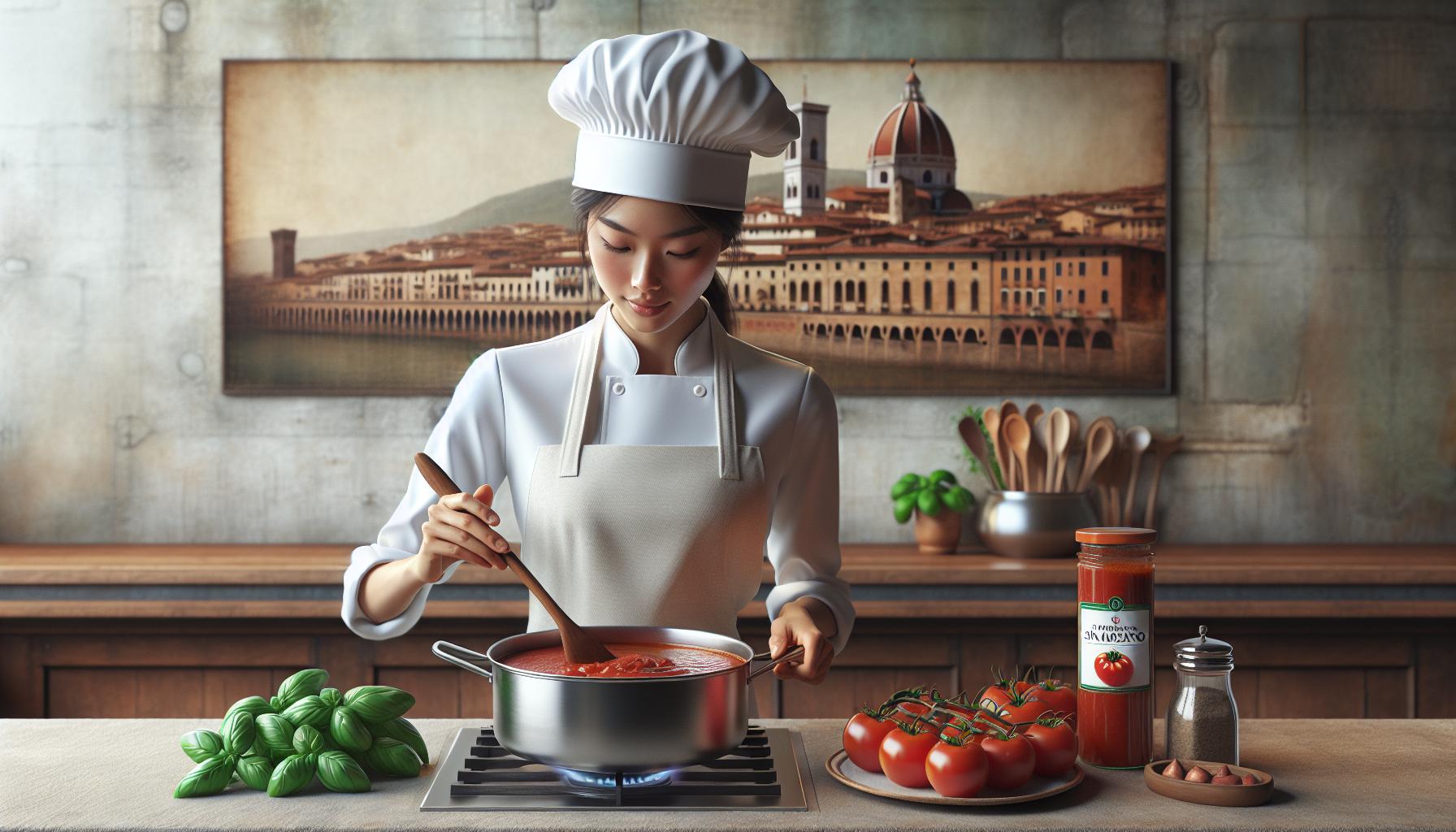Phone:
(701)814-6992
Physical address:
6296 Donnelly Plaza
Ratkeville, Bahamas.

Italian cooking stands as a testament to centuries of culinary artistry where simple ingredients transform into extraordinary dishes. From the rolling hills of Tuscany to the coastal kitchens of Sicily masters have perfected techniques that bring out the true essence of every ingredient.
At the heart of Italian cuisine lies a beautiful paradox – it’s both remarkably simple and incredibly sophisticated. The magic happens in mastering fundamental techniques like “al dente” pasta cooking “soffritto” preparation and the art of making the perfect risotto. These methods have been passed down through generations ensuring that even home cooks can create restaurant-quality dishes with authentic Italian flair.
Italian cuisine relies on precise cooking techniques that transform basic ingredients into extraordinary dishes. These methods focus on preserving flavors while creating the perfect texture in every bite.
Soffritto forms the flavor base of countless Italian dishes, combining finely diced onions, carrots, and celery in a 2:1:1 ratio. The vegetables are sautéed in olive oil over medium-low heat for 15-20 minutes until they become soft and translucent. This aromatic mixture releases essential oils that infuse depth into sauces, soups, and stews. Professional chefs prepare large batches of soffritto, storing portions in the freezer for up to 3 months to maintain consistent flavoring in their dishes.
Al dente pasta cooking creates a firm texture with a slight resistance at the center when bitten. The process starts with 4 quarts of water and 1 tablespoon of salt per pound of pasta. Dried pasta requires 8-12 minutes of cooking time, depending on its shape and thickness. Testing begins 2 minutes before the recommended cooking time by removing a single piece and biting through it. The ideal texture reveals a tiny white dot in the center, indicating the pasta retains its structure while remaining fully cooked. This technique ensures the pasta holds its sauce effectively while maintaining optimal digestibility.

Italian sauce making transforms basic ingredients into rich culinary masterpieces through time-tested techniques. Traditional sauces form the backbone of Italian cuisine, with each region contributing unique variations perfected over generations.
Classic Italian tomato sauce starts with San Marzano tomatoes crushed by hand to maintain texture. Expert chefs saute garlic in extra virgin olive oil until golden, adding fresh basil leaves for aromatic depth. The sauce simmers at low temperature for 45-60 minutes, allowing flavors to concentrate without burning. Regular stirring prevents sticking while maintaining consistent heat distribution throughout the cooking process. Advanced techniques include adding pasta water to emulsify the sauce perfectly with noodles. Regional variations incorporate ingredients like:
Italian cream sauces rely on precise temperature control to achieve smooth, silky textures. Professional chefs start with a butter-flour roux cooked for 3-4 minutes until light golden. Fresh cream enters the pan gradually at medium heat, preventing separation or curdling. Essential techniques include:
| Sauce Type | Primary Cheese | Secondary Cheese |
|---|---|---|
| Alfredo | Parmigiano | Pecorino Romano |
| Quattro Formaggi | Gorgonzola | Fontina |
| Carbonara | Pecorino | Parmigiano |
Italian pasta making combines precision with artisanal craftsmanship to create perfect texture and consistency. The process demands attention to detail from dough preparation to final shaping.
Fresh pasta dough starts with a mound of “00” flour mixed with farm-fresh eggs, a pinch of salt, and a drizzle of olive oil. Expert pasta makers create a well in the flour’s center, gradually incorporating the eggs using a fork until the mixture forms a cohesive mass. Kneading the dough for 10-15 minutes develops the gluten structure, resulting in a smooth, elastic texture. After a 30-minute rest period, the dough becomes pliable enough for rolling. Using a long wooden rolling pin, the pasta maker gradually thins the dough through consistent, outward motions until achieving a paper-thin sheet that’s translucent enough to see shadows through.
Each pasta shape serves a distinct culinary purpose, capturing sauces in unique ways. Tagliatelle requires cutting the pasta sheet into precise 6mm ribbons using a sharp knife. Ravioli formation involves placing small mounds of filling 4cm apart before folding and sealing the edges. Orecchiette emerges from small dough portions pressed with the thumb to create their characteristic ear-like shape. Farfalle takes shape by pinching rectangular pieces in the center to form bow ties. Garganelli transforms square pasta pieces into ridged tubes using a wooden dowel and grooved board. Each shape demands specific hand movements and techniques passed down through generations of Italian pasta makers.
Italian cooking techniques vary significantly across regions, reflecting local ingredients, climate and cultural influences. These distinct methods shape the unique flavors and textures of regional Italian cuisine.
Northern Italian cooking techniques emphasize slow-cooking methods and rich, creamy preparations. Residents of Lombardy perfect the art of risotto-making through constant stirring and gradual addition of warm broth. Piedmontese cooks master the technique of brasato, cooking meat in Barolo wine for 8-12 hours at low temperatures. The region’s butter-based cooking incorporates precise temperature control for creating velvety sauces like fonduta. Emilia-Romagna’s cooks demonstrate expert pasta rolling techniques for crafting stuffed pastas such as tortellini using a mattarello (long rolling pin). Venetian cuisine features unique seafood cooking methods like “in saor,” which preserves fish through a sweet-sour marinade technique.
Southern Italian cooking techniques center on sun-dried ingredients and open-flame cooking. Sicilian cooks employ specific drying techniques for tomatoes, requiring 3-5 days of direct sunlight. Calabrian cuisine features distinctive pepper-drying methods for creating crushed red pepper flakes. Puglian cooking demonstrates expertise in wood-fired oven techniques, maintaining temperatures between 700-900°F for perfect pizza crust. Campanian cooks master the art of mozzarella-pulling, stretching the curd in 180°F water until achieving proper elasticity. Traditional techniques for preserving vegetables under oil (sott’olio) involve precise layering methods passed down through generations.
Italian kitchens combine traditional implements with contemporary appliances to maintain authenticity while enhancing efficiency. A powerful stand mixer equipped with pasta attachments streamlines fresh pasta production, producing consistent results for various pasta shapes. Professional-grade food processors expedite the preparation of soffritto, pesto, and other essential Italian bases.
High-quality stainless steel pots feature thick bottoms for even heat distribution, essential for perfecting risotto and pasta sauces. Traditional copper pans conduct heat precisely, allowing for temperature-sensitive preparations like zabaglione or delicate cream sauces.
Essential equipment includes:
Specialty tools enhance authenticity:
| Equipment Type | Purpose | Temperature Range |
|---|---|---|
| Pizza Stone | Crust baking | 450-500°F |
| Copper Pan | Sauce making | 160-180°F |
| Stock Pot | Sauce simmering | 185-200°F |
| Pasta Machine | Dough rolling | Room temp |
Storage solutions incorporate specialized containers for dried pasta, airtight jars for preserving tomato sauces, and temperature-controlled spaces for wine storage. Modern vacuum sealers preserve fresh ingredients while maintaining traditional flavor profiles.
Building authentic Italian flavors starts with selecting high-quality, seasonal ingredients that form the foundation of traditional dishes. Fresh herbs like basil, oregano, rosemary, thyme, and sage create distinct aromatic profiles in Italian cuisine.
Salt addition occurs in stages throughout cooking to develop layers of flavor rather than seasoning only at the end. Olive oil quality matters significantly: extra virgin olive oil adds richness to cold dishes while regular olive oil works better for high-heat cooking.
Italian flavor techniques include:
Key flavor combinations:
| Classic Pairings | Traditional Use |
|---|---|
| Basil + Tomato | Margherita Pizza |
| Sage + Brown Butter | Ravioli |
| Rosemary + Potatoes | Roasted Sides |
| Garlic + Olive Oil | Aglio e Olio |
Aromatics enhance flavor through proper preparation:
Temperature control plays a crucial role in flavor development. Low steady heat allows ingredients to release their flavors gradually while maintaining their individual characteristics. Rapid high-heat cooking creates caramelization that adds depth to dishes like risotto or braised meats.
Italian cooking techniques represent a masterful blend of tradition simplicity and precision. These time-honored methods transform basic ingredients into extraordinary dishes that have captivated food lovers worldwide. From the perfect al dente pasta to regional specialties each technique contributes to Italy’s renowned culinary heritage.
The marriage of traditional methods with modern equipment allows home cooks to recreate authentic Italian flavors while maintaining efficiency in today’s kitchens. Understanding and mastering these fundamental techniques opens the door to creating genuine Italian dishes that honor centuries of culinary expertise.
By embracing these cooking methods anyone can bring the true essence of Italian cuisine into their kitchen creating meals that celebrate Italy’s rich gastronomic legacy.